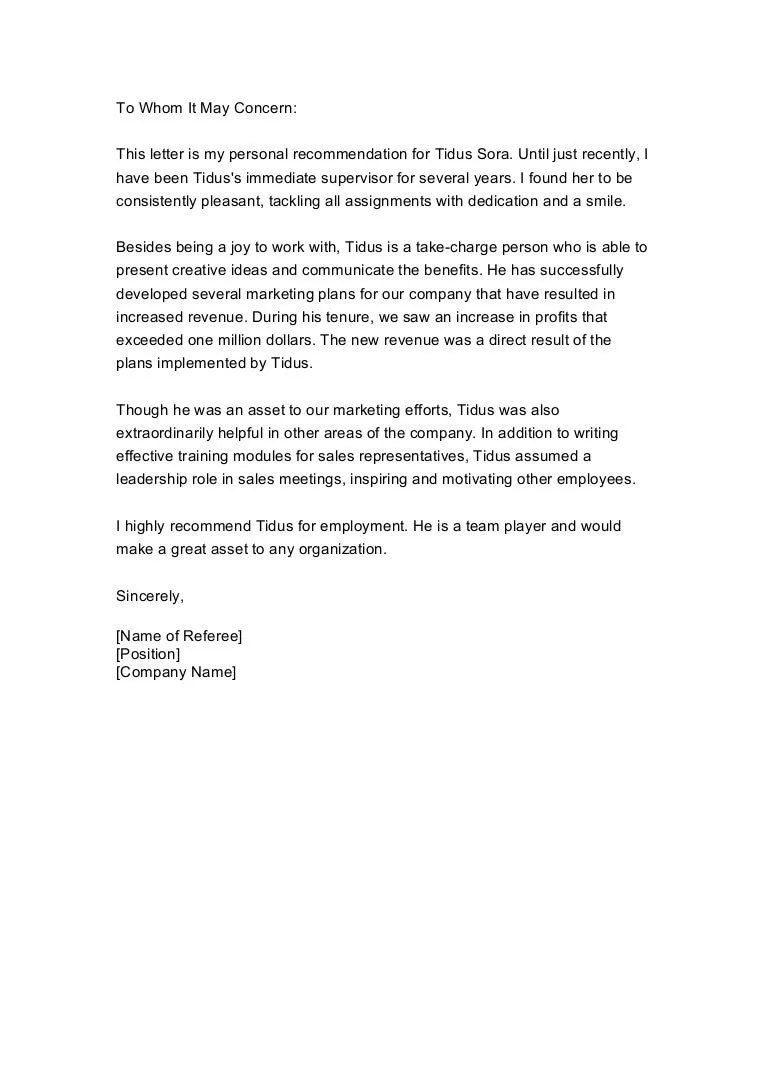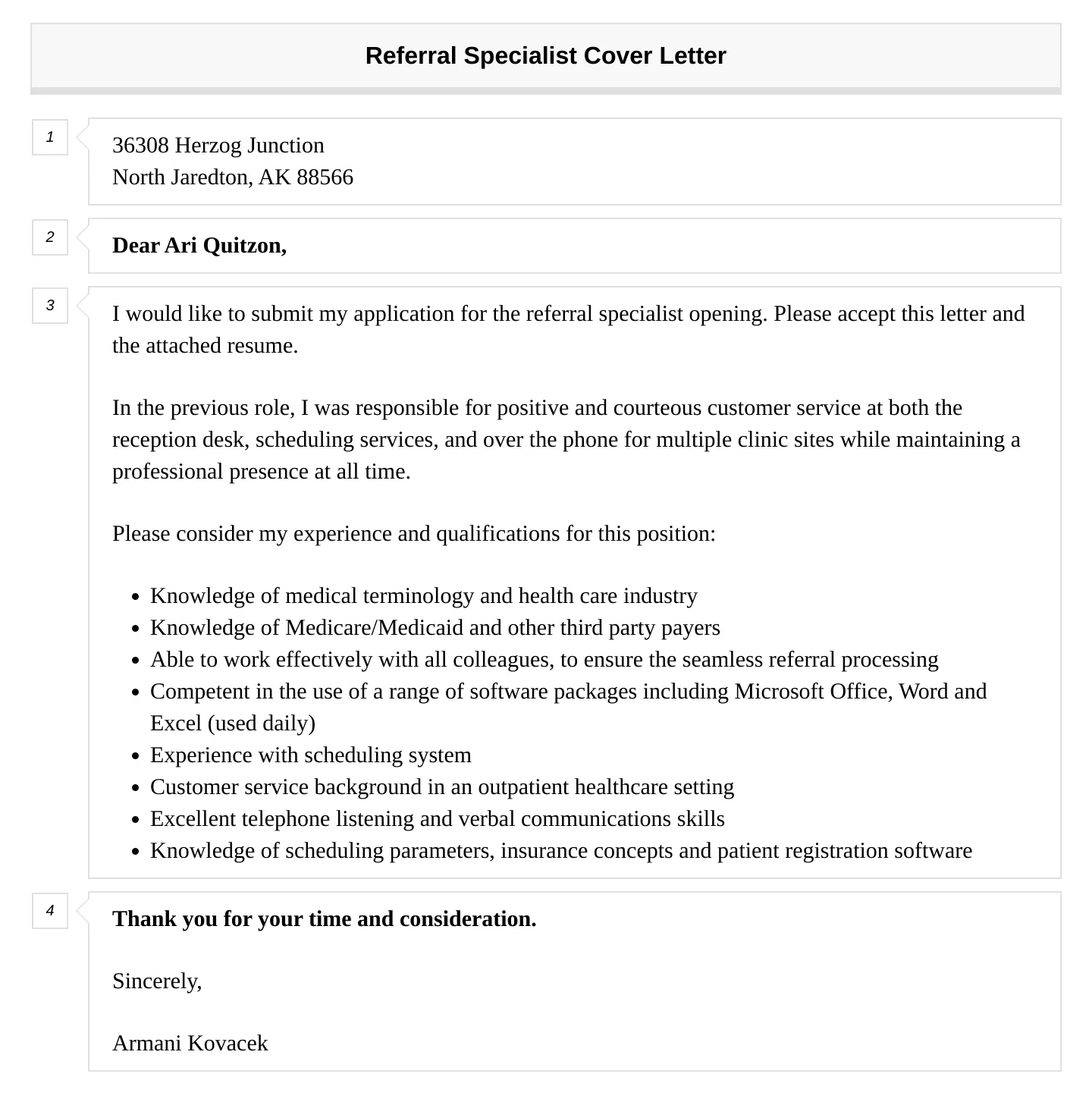What is a Referral Cover Letter
A referral cover letter is a crucial document in your job application process. It’s a customized letter you send to a potential employer, highlighting your interest in a specific position while also mentioning the name of the person who referred you. This strategy leverages the existing connections within the company, making your application stand out from the sea of resumes and increasing your chances of getting noticed. This type of letter is not just about name-dropping; it’s about demonstrating to the hiring manager that you are serious about the opportunity and are taking steps to make a strong first impression. It’s your chance to show you have the drive, experience, and skills required to excel at the job.
Benefits of Using a Referral
Using a referral offers several advantages in a competitive job market. Firstly, it significantly increases the likelihood of your resume getting reviewed. Hiring managers often prioritize applications that come through employee referrals because they trust their current employees’ judgment. Secondly, referrals often lead to faster processing times. Your application may jump to the top of the pile and avoid getting lost in the process. Lastly, referrals can provide insights into the company culture and the role itself. You can often reach out to the person who referred you for advice on the interview process or any specific challenges the job might pose, offering you an advantage in preparing for the interview.
How Referrals Boost Your Chances

Referrals give you a clear edge because they are a form of endorsement. When an employee refers you, they are essentially vouching for your skills and character. This endorsement often leads to more serious consideration from the hiring team. Employers often view referred candidates as a lower risk compared to those found through other channels. Furthermore, the referral highlights your connection to an internal source, increasing your credibility and showing you have a personal connection within the company. This advantage can lead to a quicker screening process, more interviews, and, ultimately, a job offer. Leveraging a referral can also mean that you have a better understanding of what the company is looking for in an employee.
5 Tips for a Winning Referral Cover Letter
Creating a standout referral cover letter requires careful planning and attention to detail. Following these five tips will significantly improve your chances of landing an interview. Remember that a well-crafted letter is your key to demonstrating your value and showing how your experience makes you the perfect candidate for the job.
1. Personalize the Cover Letter
A generic cover letter is a red flag. Personalization shows the hiring manager that you care about the specific role and the company. Your letter should address the hiring manager by name (if known), and be tailored to the exact job position. This requires research, so you can demonstrate your understanding of the company, its products, and the job’s needs.
Mention the Referral Source

Clearly state who referred you in the opening paragraph. This lets the hiring manager immediately know the connection. Include your referrer’s name and their relationship to you. For example, “I am writing to express my interest in the Marketing Manager position, as recommended by [Referrer’s Name].” This direct approach is essential for maximizing the referral’s impact.
Tailor to the Specific Job
Don’t use a template; each cover letter should be unique to the job. Read the job description carefully and identify the key requirements and skills the company is seeking. Then, illustrate how your skills and experience match those requirements. This targeted approach demonstrates your suitability and makes you stand out from other applicants.
2. Showcase Relevant Skills & Experience
Beyond mentioning the referral, the most critical aspect is showcasing the skills and experience that make you a strong candidate. This involves highlighting the aspects of your background that are most relevant to the job, helping the hiring team understand what value you bring to the position. Your goal is to make a connection between your qualifications and what the employer wants.
Highlight Achievements

Instead of just listing your responsibilities, describe your accomplishments. Use the STAR method (Situation, Task, Action, Result) to provide concise and powerful examples of your successes. This approach proves your ability to perform and deliver tangible results. For example, “In my previous role, I increased sales by 15% within one quarter.”
Quantify Your Accomplishments
Use numbers and data to support your claims. Quantifiable achievements are more compelling than vague statements. For example, instead of saying “Managed social media campaigns,” say “Managed social media campaigns that increased follower engagement by 20% and website traffic by 10%.” Such specific figures make your qualifications more credible and impressive.
3. Express Enthusiasm for the Role
Showing genuine enthusiasm can significantly improve your cover letter. Demonstrate your genuine interest in the role and the company. This passion helps to build a connection with the hiring manager and shows you’re not just seeking any job, but this specific one. Show that you have done your homework and are genuinely excited about the opportunity.
Research the Company

Before you start writing, deeply research the company, its mission, its values, and recent achievements. Mention specific projects, initiatives, or aspects of the company that resonate with you. Demonstrate that you understand the company’s culture and goals, and how your skills align with them. This research is critical for making an informed and impressive impression.
Explain Your Fit
Explain clearly why you are a great fit for the position. Describe how your skills and experience meet the job’s requirements. Show how your values align with the company’s. By clearly explaining your fit, you make the hiring manager’s job easier and more likely to be selected for the role.
4. Follow a Clear Structure
A well-structured cover letter is easier to read and more effective. Ensure your letter flows logically. This helps the reader to understand your points easily. A clear structure makes a positive impression and underscores your professionalism.
Header and Contact Information

Begin with a professional header that includes your name, address, phone number, email address, and the date. Also, include the hiring manager’s name, title, and the company’s address if available. This helps the recruiter to reach you if the letter resonates. The layout needs to be professional and easily scannable.
Body Paragraphs
The body should consist of three to four paragraphs. The first paragraph should state the referral and your interest in the job. The next paragraphs should focus on your skills, experience, and accomplishments. The final paragraph should summarize your interest and include a call to action, such as expressing your availability for an interview.
5. Proofread and Edit Carefully
Errors can ruin your chances. A cover letter filled with typos, grammatical errors, or poor sentence structure immediately undermines your professionalism. So, proofreading is the final step. This can be the difference between success and failure. Take the time to check everything before sending your application.
Check for Grammar and Spelling

Carefully proofread your cover letter for grammatical errors and spelling mistakes. Use a grammar checker, and then read the letter aloud to catch any issues that you might have missed. Small mistakes can damage your credibility and your chances of landing the job. Correct your mistakes before submitting your cover letter.
Get Feedback
Ask a trusted friend, mentor, or career counselor to review your cover letter. Another pair of eyes can often spot errors or suggest improvements that you might miss. Seek feedback on the clarity of your writing, the relevance of your content, and the overall impression your letter makes. Incorporate any feedback you receive before submitting your cover letter.
Examples of Referral Cover Letter
To fully grasp how to effectively write a referral cover letter, review various examples tailored for different roles. This will assist in understanding the best way to adapt your approach to the specific job.
Example 1 Sales Position
Dear [Hiring Manager Name],
I am writing to express my strong interest in the Sales Representative position at [Company Name], as recommended by [Referral’s Name]. I have known [Referral’s Name] for [Relationship] and I am very excited to be referred for the position.
In my previous role at [Previous Company], I consistently exceeded sales targets by an average of [Percentage] by [explain how]. I’m passionate about sales and driven to achieve company goals. I am experienced in [list of skills] that align perfectly with the job requirements listed. I am also very familiar with [Company Name]’s target market and sales strategies, and I’m eager to contribute to the growth of [Company Name].
Thank you for considering my application. I am available for an interview at your earliest convenience.
Sincerely, [Your Name]
Example 2 Marketing Role
Dear [Hiring Manager Name],
I am writing to express my keen interest in the Marketing Manager position at [Company Name], as suggested by [Referral’s Name]. [Referral’s Name] has been my colleague at [Previous Company] for [Time period] and has highlighted a great workplace.
Throughout my career, I have proven success in developing and executing marketing strategies that increased brand awareness and customer engagement. At [Previous Company], I successfully led a campaign that increased website traffic by [Percentage] within [Time period]. I have an excellent understanding of digital marketing tools and a proven track record of driving measurable results. I am particularly excited by the opportunity to contribute to the expansion of [Company Name]’s brand in [Area/Industry].
I am available for an interview to discuss my qualifications further. Thank you for your time and consideration.
Sincerely, [Your Name]
Example 3 Software Engineer
Dear [Hiring Manager Name],
I am writing to apply for the Software Engineer position at [Company Name], as referred by [Referral’s Name]. [Referral’s Name] and I have collaborated on several projects at [Previous Company].
I have extensive experience in software development, with a focus on [mention specific technologies or languages]. I have a strong track record of delivering high-quality code and solving complex problems. In my previous role, I was instrumental in developing [Project Name] that resulted in [Specific Achievements]. I am eager to leverage my skills to help [Company Name] innovate and grow.
I appreciate your time and look forward to the opportunity to discuss my application further.
Sincerely, [Your Name]
Conclusion
Writing a referral cover letter is a strategic way to boost your job application. Following these tips, showcasing your skills, highlighting achievements, and tailoring your letter to each job, you will significantly increase your chances of getting noticed. Use the examples as a guide, personalize your letter, and make sure you are always professional and enthusiastic. A well-crafted referral cover letter can be your key to opening doors to new job opportunities. Good luck.
